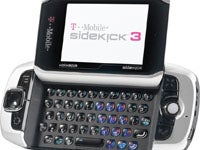 |
Source: Danger |
Just two months after the deal was announced, Microsoft (NASDAQ: MSFT) this week completed the acquisition of hip smartphone designer and mobile services provider Danger.
The move is part of a larger initiative meant to reach younger, mobile phone users — like those who buy Danger’s Sidekick phone and subscribe to Danger’s accompanying services, for instance.
“The Danger mobile Internet platform, which connects people to their social circles and other rich content, is an integrated end-to-end solution that enables people to interact with their friends, social communities and content through the Internet and Internet services,” according to a Microsoft statement.
Microsoft, however, still hasn’t described how the acquisition fits into its overall mobile device plans or corporate culture. That becomes only slightly clearer with this week’s announcement, but a nagging question remains of whether Microsoft can subsume Danger and its technologies without losing the products’ audience.
“Microsoft largely ignored the concept of a consumer smartphone, [but] then the iPhone changed everything,” Greg DiMichillie, lead analyst for application platforms at Directions on Microsoft, told InternetNews.com. “Now, there is a scramble to have a story around consumer smartphones,” he added.
Microsoft has been successful in the enterprise mobile space to date by focusing on the corporate smartphone market — high-end phones and expensive services targeted at enterprise users. In fact, Microsoft CEO Steve Ballmer spoke about the company’s success in that area during his keynote at the company’s 2008 Most Valuable Professional (MVP) Summit in Seattle on Thursday.
“[With] Windows Mobile, ironically, we will outsell both Apple and BlackBerry quite dramatically this year. It’s ironic, and most people don’t know that,” Ballmer told the audience.
Besides buying Danger’s products and technologies, however, Microsoft was also interested in acquiring the team’s technical knowledge and its understanding of the consumer smartphone marketplace.
“Danger’s expertise in building great, intuitive client software for mobile handsets connected to powerful hosted back-end services fosters rich consumer experiences in communication, media sharing, entertainment and personalization,” Microsoft stated.
Danger will be integrated into Microsoft’s newly created Premium Mobile Experiences (PMX) team, which is part of the Mobile Communications Business (MCB) within Microsoft’s Entertainment and Devices Division, according to Microsoft’s statement. The PMX team is headed by Roz Ho, whose job title is, prosaically enough, corporate vice president of Premium Mobile Experiences.
Ho reports to Andy Lees, the senior vice president of the MCB — a 17-year Microsoft veteran promoted to the post in the most recent Microsoft reorganization in February. Meanwhile, both Danger co-founders — Matt Hershenson and Joe Britt — will report to Ho.
One abiding question is whether Microsoft’s corporate culture will allow it to keep from tinkering with the Danger formula to the point that it no longer works with its established audience.
For instance, Danger’s software is written in Java — virtually anathema inside Microsoft. The company has said no decisions have been made regarding the codebase yet, but Directions on Microsoft’s DiMichillie doubts that at least the client software will be unscathed.
“They’re not going to use the software,” he said. “The main thing they want is people who have built something that connects with consumers.”
DiMichillie also said he thinks the first results of the acquisition are likely to come when Microsoft ships the next major release of its smartphone software — Windows Mobile 7 — which may come as early as later this year or early 2009.
“Windows Mobile 7 … is when I think we’ll start to see results of this merger,” DiMichillie added.


